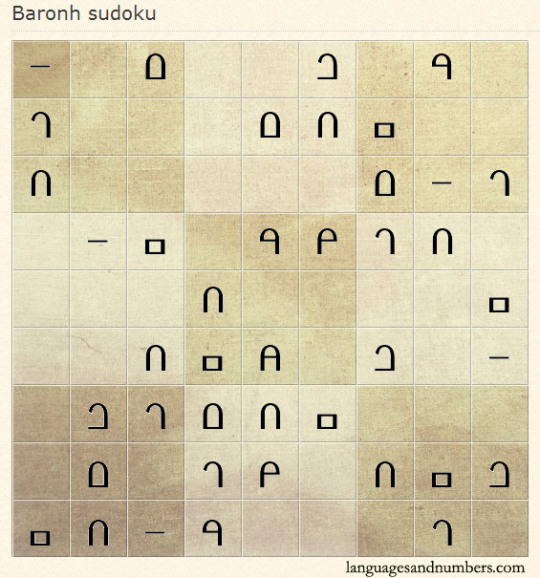#Baronh
Explore tagged Tumblr posts
Text
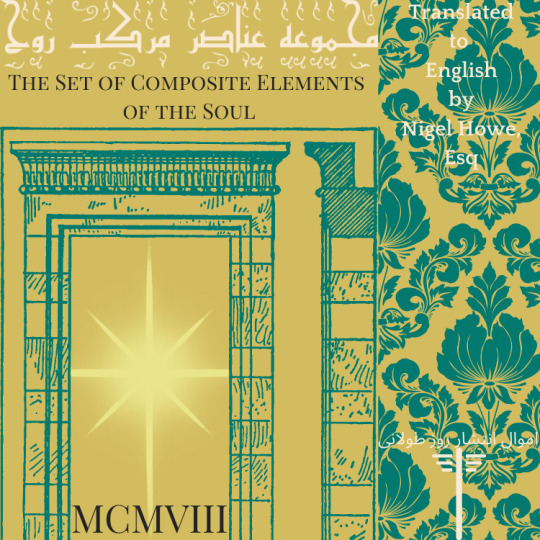
The Set of Composite Elements of the Soul (Persian: مجموعه عناصر مرکب روح) is a collected work of religious and theological materials and literature that, at first, explains the various experiences and adventures of pagan heroes, myths, and legends, going on to list a total collection of each sapient species' chief cultural deities and a thorough description of them all.
The volume was written and compiled by Lady Mehr Darzi in 1899 before being brought to Western readers in 1908 by noted travelling English historian Nigel Howe. A tremendous, lifelong effort by a disgraced former Islamic mystic priestess, her final work received, at first, little notoriety until it was examined in greater detail in Isfahan by a cultural museum's high curator - who became obsessed with it and even offered to pay her for a visit to the museum in exchange for an interview.
Lady Darzi accepts the offer, but perishes, along with many others, in a catastrophic train derailing within the Abr Forest. Her death is a tremendous blow to the city of Isfahan, which had, up to that point, begun to attract a cult following thanks to her high curator admirer, Ben Alam, spending a great deal of his own time and money advertising her work. He exhibited her personal history, as well as her personality, from things he'd learned about her in the series of letters they exchanged with each other before her departure from Mashhad.
She is brought to Isfahan and given a very small but lavish and formal funeral, where a great feast and candle-lit dance begins a lasting city tradition so popular with its attendees that word of her work and its influence eventually reaches the ears of nomadic Englishman Nigel Howe in the autumn of 1904 after he'd been staying there since the start of the year. Fascinated by conversations about a 'ghostly, white-clad feline woman' who had managed to study and explore so much of mortal spirituality, he eventually meets with the high curator of Isfahan's Imperial Museum of Culture and the Lost Histories and Sciences of the Earth - who he learns had been the source of the city's own fascination with her.
After weeks of deliberation and intimate discussion, Nigel Howe is gifted the original copy of Lady Darzi's The Set of Composite Elements of the Soul to study, alongside the Persian language, to then translate into English so that future copies can be made for English-speaking readers. After four years of dedicated research, Nigel Howe, now fluent in Persian and successful in his task, takes his translated copies with him on his return to London, where the first edition release of the English version of Lady Darzi's life work is brought to the West.
The initial response was tepid, but soon drew fanatical interest from the Temporae Calendarium Project - a civilian London collective who were united towards researching and cataloguing the various cultural differences of sapient species. They promised to sponsor and support the translated works of Lady Darzi, namely through advertising and gimmicks, in exchange for 30% of all sales in perpetuity. Howe agrees, and from 1908 until the beginning of the Great War, the Temporae Calendarium and its supporters made The Set of Composite Elements of the Soul their sole focus.
It is only in 1920 when the book becomes a popular interest in the city of London, but when it does, its popularity then explodes across the entire West - though especially in Paris, which begins translating the volume into French.
As of 2020, The Set of Composite Elements of the Soul has been translated into 52 languages, and the Tomb of Lady Mehr Darzi of the River Fronds in Isfahan has become a popular tourist destination. A permanent exhibit of her, her literature, and their influence remains in the former Imperial Museum of Culture and the Lost Histories and Sciences of the Earth - which has since been renamed to the Mohammad Mosaddegh Museum of World Culture.
While the first half of the book postulates and explains the complexities, similarities, and histories of many cultural and non-cultural pagan faiths in the world, it goes on to list and describe, in fairly substantial depth, each deity to each species' cultures, which Lady Darzi was able to express after many years of travel and hundreds of interviews with many different kinds of pagan priests and leaders - all of whom were credited in the glossary section.
This comprehensive list features such articles as the HosÌgɜganÌ, and begins thusly with:
• Apea, or just Cest, is described as the very sky itself, but much more than this, too. It is all things, it is everywhere, and, yet, it is also something real and physical. It is said to be too blinding to see, too hot to touch, and too beautiful to describe. It is both heaven and saviour, god and friend, teacher and companion.
In the earliest zerda sapiens litanies, the fennec foxes of extremely ancient Libya and Algeria once describes Cest as being an oddly-shaped 'ovaloid' - an oval-shaped being, with oval-shaped appendages - that, in its very centre, shined an incredibly bright star-like light. Its arms were large and rounded, and when things were touched by Cest, they would turn to pure crystals known in the fennec language as Afezeria oz Apea, or 'blessed by the most-blessed' - as Cest Apea itself means 'blessed reality'. These crystals would only last for thirty minutes before disappearing in the literal blink of an eye.
It is widely believed by Apeaen fennecs that Lot's wife, in the biblical accounting of Sodom and Gomorrah, was actually blessed by Cest in this way.
Cest has no singular purpose or celestial need other than for life to persist. Threats to existence are seen as the only sin to it, as it is existence, and, thus, threats to existence are threats to itself. It rewards those fennecs who provide for the land and sky most fondly, making many Apeaen fennecs environmentally careful if not very proactive in the preservation of the earth and its elements. As of this year, 1899, an Apeaen priest in upper India has been trying especially hard at purifying a lake that he believes is a mirror into the 'beauty of Cest Apea', owing to the current fennec name for the lake: Celetille der du Dje, or 'clear and beautiful to the body [of Cest]'. The Persian translation for this would be 'mirror lake'.
Because Cest has no want or fear, beyond the protection of reality, the Apeaen fennec believes that to lead a pleasured and happy life is how one may please Cest most and, on the day of that fennec's death, they may become part of Cest. In this way, a fennec who perishes in life is absorbed into the body and consciousness of all things, which, to that fennec, means that they will become a god in death. Instead of this enticing Apeaen fennec foxes to become a cult of death, they tend to live extremely sexual or flamboyant lives, where the pleasures of the flesh and mind are seen as holy exaltations. This has led many Apeaens to imbibe of alcohol and drugs, and to often partake in sex rituals, or to have sex gladly, easily, and often with each other and those willing but not of their faith.
• Doólelasholan and Emethá are the chief deities of pagan cervidae sapiens, or The Háalemamid.
Doólelasholan, which comes from their language, and means 'alone at last after a tiresome experience', is described by ancient deer peoples in China and Europe as a very large and naked white buck with red stripes on his antlers who hunts his many evil offspring in the day before resting in caves at night.
The sun, an invention of their primordial mother Rumi-Loláad Lhohoth, was poisoned in secret by Doólelasholan's sinister sister-wife Emethá. Eternally cursed by this poison, it would fall from the sky at night to let her and her wicked children know that Doólelasholan is asleep and, thus, that they were safe to commit terrible crimes upon the earth and its people.
Emethá, which means 'clown', was resentful of her fate and existence. She is deeply spiteful of her godly and all-powerful family, which she believes forced her to wed her own brother, to whom she has always despised from the beginning of time. She betrayed her brother-husband Doólelasholan, severing their relationship and, thus, casting her down from divinity. Moments before her fall, she stabs him with a white oak stake that she had whittled in private. The wood is derived from the first tree of the earth, which is also the most sacred object of all sacred objects and the source of all antlers on every mortal deer. This was a sacrilegious act, perhaps the most sacrilegious act in the Háalemamid faith.
Now mortal and forever weakened from the attack, Doólelasholan is tasked by his mother to find and destroy Emethá. But they did not know her to be pregnant at the time of her exile to the mortal realm, and, so, through strange and dark sorcery, Emethá turned her future offspring into terrifying mockeries of deer that she planned to take the realm over with; to turn all living things against their creators by assaulting and destroying heaven and ending mortal reliance on gods and divinity.
Many culturally pagan deer worship and revere Emethá, who is described as having a white skull-painted face, whose entire body is covered in a gruesome crimson red paint except for her pelvis, forearms, wrists, and hands. They see her as the custodian and protector of mortality, a warrior and protector worthy of being worshipped as both god and equal.
To honour her, these deer, who call themselves lhebehizh, or 'her shamed', will paint or tattoo their bodies, which they will wear every day for the rest of their lives. In addition, they will partake in evening rituals where much smoke is produced and many fires are made. They will also have ritualistic orgies, and readily partake in the common or copious use of drugs and alcohol, as most earthly pleasures are seen as connecting with the most meaningful and true of all divine things, which, according to the lhebehizh, is wohothulewoth wíi, or 'living for/through the wisdom of the mother'.
Along with these things, the lhebehizh are ancestor worshipers and greatly venerate the recently deceased, who they assemble and commit to very large and extravagant funerals, for, in the month of December, they act out a kind of 'social fasting' where many will isolate themselves from their friends, their family, and/or their communities; their attempt to strengthen their understanding of Emethá by putting themselves in similar conditions, or search for familiar feelings, for what she, as a banished once-god, has experienced.
Most culturally pagan deer, of a significant living portion, even, worship and revere, instead, Doólelasholan, his mother Rumi-Loláad Lhohoth, his many fathers, and the various animistic spirits and incarnations of divinity that are assembled in their heavenly, infinite halls. These are the Háalemamid, or: 'the children'. They live lives almost a complete opposite of the lhebehizh, where they revile all forms of body art; they will never wear body paint of any kind, or brandish tattoos. Instead, they paint, adorn, or otherwise decorate their antlers and foreheads in beautiful arrangements of geometric patterns, crystal displays, wood charms, or cloth ribbons.
Instead of the veneration of familial ancestors, past heroes, and the recent dead, the Háalemamid honour greatly the living best of their order, who they uplift to great status within their communities or societies.
Instead of honouring divinity through the flesh and with mortal needs, they abstain from any and all intoxicants, and live exceedingly sober lives.
Instead of ritual isolation, they tend to congregate in large communities, where many have come to stay, and where some have long been even for several, or dozens, of generations.
The Háalemamid vehemently oppose lhebehizh. Most believe them to be no worse than the twisted abominations which have come from Emethá's evil womb, and these two religious factions have, throughout history and into the present day, fought, battled, and murdered one-another in a unceasing holy war that neither side believes will win without the complete and total destruction of the other. Even as far west as the United States, and as far south as Australia, there are Háalemamid leaders and speakers who, if they do not at least publicly spurn the lhebehizh, will actively promote harmful actions to come to them.
In the reverse of this, there are lhebehizh warriors and spiritualists who, like the dervishes and the janissary of the past, commit themselves to tasks of careful sabotage and intelligencing against the businesses and political efforts of the Háalemamid in cities so wide and towns so small.
• nYbi-kEos rU-nUm Ub sYbU Yt-as, or, in Persian, Wise Raven of a Lack of Mortal Thought or Origin. It can also be translated much more literally as Wise-Qualified Big Black Bird of Thing-without-Concept From-Place. This is the highest deity, above a pantheon of many much weaker deities, worshipped by the Ôzvom - which, in their very unusual and difficult language, simply means 'feline'.
The Ôzvom are distinctly, and quietly, the culturally pagan felines of the world. While they number in what is understood to be merely the thousands, there is at least one Ôzvom feline in every nation in the world, and each of them are unusually powerful and wise priests of their order. Their power does not lie in mysticism, or magical roots, but rather in what they seem to always be aware of. This almost unheard-of ability to predict harm and distress from agencies, governments, and most people has preserved what little remains of an extremely ancient and virtually unknown unified religious body that seems to always be in contact with each other despite extreme distance from each other.
nYbi-kEos rU-nUm Ub sYbU Yt-as is known much more commonly by their simplified name Tap-Daivru, which means 'leads well', but is also known, especially by Lepee rabbits and the West, as Leads Well. Leads Well's earliest description is well-explained and documented by a Hellenized sapient Persian white tabby cat from this very nation, who resided in what was once known as Hekatompylos, near the current city of Šahr-e Qumis. This cat, a religious scholar not unlike myself, calls the city of his birth to be that of the ancient city of Magnesia on the Maeander, in what is now known as the Turkish village of Tekin. His description, which he obtained through many conversations with many ancient Ôzvom, who were also widely Hellenized like himself, explains that Leads Well is a sapient raven. There are no sapient birds; there have never been any sapient avians. This makes Leads Well a very peculiar religious mystery that, if any living Ôzvom have the ability to solve, have long-since refused to do so and very likely never will.
Leads Well is described as an obsidian-black raven that lives genderless, and responds only to they and them. They wear a large and flowing white shawl, which drapes in two long tassels, and covers entirely their broad shoulders. Their wings are attached to their arms, which are said to be bizarrely long, just as their legs are also held to be unusually long. They have five talons, which act as their fingers, and have three talons which act as the toes on their feet. Their long arms and legs are adorned in white gold loops, chains, trinkets, charms, and chains, which all shift into each other to create a very noticeable sound wherever they move. Their well-established physical description exists because they are believed to have once been a god whose divine plane was the same as the mortal one, and that many descriptions of them come from their personal experiences in meeting them. They believe that Leads Well thrived with all Ôzvom felines on what would eventually become the mortal realm - until they suddenly went into hiding, deep beneath an ancient temple that is deep within the world. This location, which can somehow be accessed by mortals, was nonetheless made nigh-impossible to find except by only those with the purest of hearts and intentions.
Ôzvom today believe that, if any one such Ôzvom feline is able to find and enter the cave which leads to this deep and far-away temple, and then successfully enter the temple themselves, that they become part of Leads Well's personal secret pantheon, who then shares with them all their great knowledge and power.
Remarkably little else is known about Leads Well, except that, in the long-ago religious lore of the Ôzvom, it is told that Leads Well created existence by a spark that came from them clashing their white gold staff with a sword after battling some unknown dark power or force, and that, when wounded in this battle, their blood fell to temper the heat of the new stars, which then came to bring and create life on the worlds that surrounded these stars. Thus, all life is divine and has the potential to become gods and creators.
• Catmh is the only deity, or, rather, the only deity left, in the culturally pagan sapient marsupial's pantheon. The meaning of its name is a mystery, like many words and names from their mostly-dead language. This culturally pagan religion was known as Cioth, with each individual known as an Usarh, and has long since gone extinct. Sapient pagan marsupials, when they have been pagan, have overwhelmingly supported and become pagans of already existing religious orders like Graeco-Romanism, Semitic paganism, Celtic mythology, and etc. By the time of the Pope Pelagius II, there were only a few hundred Usarh marsupials left, with most living in the then-undiscovered United States, Canada, and Alaska. Today, the only thing left that remains of their faith is the description of their great god Catmh and how it came to become the only god out of what was supposedly a very large pantheon. None of the names or descriptions of these other gods remain now, having been entirely lost to history.
Catmh only appears, now, in intricate bas reliefs found in cave walls, and in the catalogued testimonies and traditions of the very few surviving Usarh marsupials. It is physically described as being a large floating brain with tendril-like appendages that transmits and absorbs thoughts through touch. Its limbs are said to glow when it touches living things, which seems to include trees and flowers. While its depiction may be extremely frightening, Catmh, whose wisdom and power were so beyond mortal comprehension as to defy any attempt to give a name or title to it, had no clear desire whatsoever to either destroy or create.
Instead, Catmh, after becoming the only remaining god to the Cioth, wandered the earth for thousands of years, collecting mortal knowledge and experiences, and observing mortal beings in secret, before mysteriously vanishing from the world to return to the empty palace from which it first came, where it is believed by the last of the living Usarh that Catmh ascends beyond godhood to become something too great to even begin to safely fathom.
• Wawa Ma Mama Mije Mi, or just Mama, is the enigmatic and all-powerful deity of the culturally pagan rodent. These pagan rodents, known collectively as the Kulupu Ona and individually as Mi, worship, still, this divine creature who, depending on the time of day, the very day, the month of the year, the season in these months, and the actual year itself, could become a king or queen, mouse or rat or other kind of rodent, change personalities, change sizes, become particularly more powerful or substantially weaker, or even die - only to be reborn again at the start of the new year. This single but ever-changing godly being, who sits atop a throne of golden rat skulls and wields a rod made of pure flaming pink energy, is said to have given orders to the first of the European and Asian rodents to assemble into covens, and, with their rod, blessed the first feral rodents with becoming sapient.
Mama is never given a specific description, because they are always changing their shape, their fur, or even their species, and their personality, too, is elusive, for even this changes always and seemingly so at random that only the very devout Kulupu Ona would truly know.
• Maya Sempra is the only remaining deity to whom the sapient lupines of western Europe once worshipped before unanimously absorbing into Graeco-Romanism. Like the sapient marsupials of Europe, wolves preferred to become part of other paganhoods in their region, at least in theory. The rise of the Roman pantheon is seen to be synonymous with the rise of lupine paganism, for it is the wolf who fostered the Roman gods into the lives of non-wolves. Today, lupine pagans are overwhelmingly Graeco-Romans, just as almost all European wolves - which have been the most numerous species in Europe for many centuries - were, too, in the times of the SPQR.
This absorption was so complete that it's postulated whether it ever happened to begin with. There are theories, in the time of this writing even, that Graeco-Romanism is tied to the sapience of all wolves, with some believing that Jupiter blessed the wolf with sapience before any and all other species because Jupiter and all the gods were wolves themselves.
But there is evidence, though scarce and rare, and in the lost-but-not-forgotten Proto-Romance language of Fenestro, that ancient wolves, far removed from the era of Tarquinius Superbus, once worshipped a wide pantheon. Their origins and the cause of their being cast away in favour of Saturn and Jupiter are completely unknown and will likely stay this way for all time, but it is known, even now, and mostly thanks to one surviving statue in a lost Croatian cave, that Maya Sempra once held great sway once with the sapiens lupini species.
Maya Sempra, Fenestro for 'never always'. According to cave writings found in the Cave of Prometheus in East Croatia and on a statue of her likeness in the very same cave, she is thoroughly depicted to be an extremely tall wolf. Said to be three meters standing, with very long arms, very long fingers, and a very long snout, she strode the world hunting, killing, and eating the evil and the weak - which to many ancient wolves was one-and-the-same. Her appearance was said to only frighten villages who knew she would cause harm to them and, thus, would be deserving of harm and death.
Only the greatest and strongest of lupine towns and villages would be gifted three boons from her. The first boon was a tooth. She has many teeth, because her snout is so long, and her teeth are very long and sharp because of how tall she is. It is said that the chief of these honoured wolves would hone and shape the great wolf's tooth offering into a sacrificial dagger. The second boon would be a child. The strongest of the tribe's men would be chosen by her and they would mate together in the open while this chosen wolf would be praised and honoured by his entire tribe until his eventual orgasm. Afterwards, his spilled seed would be used to bless the bodies of three women and one man of his own choosing. These women would become his wives, and the man would become his lifelong bodyguard. The third boon would be that this chosen man would be made chief of the tribe of his birth, which means that the active chief would be killed. Those chiefs who would run from Maya Sempra would doom their village to slaughter, so the honoured tribe would watch as Maya Sempra tears the chief, who becomes an unsteady but willing sacrifice, apart. The blood-soaked bones of the tribe's former chief would then be fashioned into a crown which the new, blessed chief would wear for the rest of his life and pass down to his children, which he would be guaranteed to have many of with his three wives.
Then Maya Sempra, the great white wolf, departs, to kill and eat the unworthy wolves of the world, and to bless the tribes and people most worthy of her boons, which was said to shape the fate of the people's futures as being blessed by her was widely considered to be the ultimate of all possible divine honours.
• Mari, Tari, and nInlé are three extremely powerful creator-gods worshipped by the ever-devout and dedicated Lepee rabbits. A dualist faith with an outlier, Lapia, which praises and uplifts Mari above nearly anything and everything, nonetheless has those among them who greatly revere Tari - but who all live to be terrified of nInlé.
Mari, who created the earth and willed herself into existence, willed, too, her teacher and companion Tari in a frantic cry of loneliness. Later on, centuries or more, a third all-powerful being reveals itself to these two sorcerous creatures of space, who Mari herself names as nInlé.
Mari, after taking a rabbit form, leaves the earth to Tari to nourish and observe while she pursues nInlé to the edges of reality. All the while, she is creating and seeding more worlds to bring them to equal or greater levels of greatness to that of the earth - though it's stressed with intent by the culturally pagan rabbits, who call themselves Lepee, that the earth, or Hraeth Ethile, has, is, and will always be her magnum opus; her most-favoured, most-cherished creation in all creation.
Mari, Tari, and nInlé are each explained in great detail, in large part due to legendary Lepee rabbit bookkeeping and archive work, work which has always been widely respected and renowned for being some of the best, most thorough, and widely unbiased in the world and in all history. Even the most insignificant details of sapient rabbit past and present have been recorded and kept, with copies made to ensure a permanent place in the world. This has made this part of my work the easiest, and, in that way, I thank the Lepee rabbits with all my heart.
Mari is known to be a kind of celestial shapeshifter who has two forms, the first of which she only shows in formal encounters. This form, which is regarded as her 'true form', is a metallic or smooth stone-like and highly-reflective obsidian-black triangle structure that floats upside-down. Her mortal form, which she took for herself in honour of her 'most-honoured creation', that of the sapiens leporidii species, is one where she looks like "a young and naked freckled white-furred adult rabbit woman" who is often wielding a very strange spear and "has a black cloth blindfold over her eyes and tied to the back of her head where two very long ribbon trails are always shifting to a wind that is not there". What makes her spear strange has been left up to debate, but most believe it is because of the material of the spear itself, which is, in some descriptions, "as white as the sun's light", or "as dark as the deepest evening".
Mari has had only a few personal experiences with the species to whom she has both created and gifted the earth to, and in each of these experiences, she has given kindness, counsel, food, wisdom, or protection. In not one of these experiences has she ever shown any emotion more negative than sheer, weeping disappointment. This has earned her a reputation for being a loving and perfect being, on the same level of unconditional adoration towards her mortal subjects as the Christian god. Unlike the Christian god, however, there are no sins in Lapia whatsoever, but there is no understanding of what heaven is, either. The Lepee afterlife is one that has been debated as long as the faith has existed, which, if it is as true as it is believed to be, is older than history itself.
Tari's description is less prophetic and poetic and more blunt and obvious. He is the sun. He has always looked like the sun, he has always been the sun, and he will remain the sun. A silent, constant observer and steward, whose light and base power is so utterly incredible that all mortal life is overwhelmingly dependent on it. But even this, as it has been implied, is only there until mortals devise a way to no longer be dependent on it. It is then, according to the Lepee bible, that rabbits can begin to finally seek after the mother who birthed them. To get the answers they've long sought after all these passing aeons.
Finally, it is nInlé who defies and exhausts understanding and description. First noted to be the literal void of space, it is in the tale of the Legend of Unknown Son where she took the shape of a crimson-eyed black rabbit with large angelic wings as dark black as her fur. Her ability to perform miracles and sorcery is so great as to be considered instantaneous and easy. She has killed mortals without any regard for their suffering, but seems to always have a specific, singular goal in mind. Without hesitation, she will torture and destroy anyone who stands between her and her goals - whatever they could possibly be. She does not seem to care about bystanders, however, unless it is in cases where they have directly or indirectly wronged someone she has been searching for or was needing something from.
Despite her seemingly unlimited power, in the only legend, and in all the rumoured mythical encounters with her, she always seems to be relying on one or more mortal rabbits on giving her something specific, or helping her understand or explore something unknown to even her. In this way, she is anathematic to Mari. Mari, who seems to have no need for mortals at all, to the point of leaving earth forever, and nInlé, who seems confused and fascinated by mortals, and requires at least one's aid at any given time. From having intercourse, to acquiring a kind of rare item, or just simply having very long and compounded conversations, the supposed infinite void of space and time and mystery given mortal form appears to be much more interested in Mari's creations than Mari herself, though is certainly quick to kill any who believe that this complacency of hers is something equal to weakness.
• HosÌgɜganÌ is a council of five divine beings whose name in the cultural language of sapiens mustelidae means 'experimenters.' Unlike most cultural pagan deities, except for perhaps the incredible literary and artistic popularity of the Lepee goddesses Mari and nInlé, HosÌgɜganÌ, and their powers and experiences, are featured in plays and novels because of the violence and mystery that is part of their existence.
The mustelid cultural religion is alive and well, though perhaps just as stagnant in growth as Lapia, and, just like the Lepee rabbit, the culturally pagan mustelid - known in their language of Fáre as MṓjÌ, or 'village' - holds their council of five gods to be supreme, to be highly intelligent, and to be profoundly dangerous.
While the individual names of HosÌgɜganÌ have never been disclosed - which has always been a purposeful decision, for only the role of the MṓjÌ's religious 'banker' in the Canadian town of Tofino is allowed to know their true identities - their individual descriptions are indeed rich, as is the throne room from which they rule over their many cruelly-taken realms.
HosÌgɜganÌ are killers and galactic conquerors, save, perhaps, for the badger among them. They each hail from a different, taken world, none of which have a name in Fáre, and were risen to the 'rank of god' through a unanimous and diplomatic process between the existing council members. It is believed by most MṓjÌ that the first member brought into divinity was a robed weasel, who then uplifted an otter and made her the second-oldest member of HosÌgɜganÌ. Some argue, however, that a badger was first to inducted into the council. Whatever the truth is, their exploits are many, and were covered in greater detail earlier on in this book.
Suffice it to say, these divine beings are very real to the MṓjÌ, who also believe that they continue to conquer world after world. All mustelids are supposedly the descendants of teenagers and young adults that were brought to Earth as trophies, or perhaps just as proof, of HosÌgɜganÌ's conquests across the stars.
HosÌgɜganÌ share their profound power and influence between their five members (in no particular order):
The first member is a feminine weasel who wears a starry black-cobalt robe where dozens of jewels hang from all corners of. She is seen by many to be the most powerful and important member of HosÌgɜganÌ, perhaps the leader and founder of the divine council.
The second member is a masculine badger who wears a bright orange shawl or poncho with striking white stripes. He wields a long wooden staff with a slanted top where stars hang from tethers of pure light. He is said to be the wisest being, and the only member of his council who is pacifistic by nature. This has supposedly put him at odds with them.
The third member is a feminine marten wearing long-sleeved white gloves and very long white leggings, with equally very long red ribbons tied near the ends. At the end of these ribbons are attached many white gold chains that drag along the ground along with the ribbons themselves. She wields a large wand, with a tip made of prismatic crystal, where a red ribbon is tied between the crystal and the wooden handle to bond them both together.
The fourth member is a feminine otter wearing a full suit of exceptionally regal gold-black armour that is adorned and tied with orange, white, and red sash and ribbon cloths. She wields a single sword, which is tied to her hip with a sash made of all three of these colours. This sword is a kind of battle sabre, or perhaps a broadsword, with a bright red handle, a prismatic crystal pommel, and a dark black blade that sparkles at all times. This sword is legendary to the MṓjÌ, and is featured prominently in MṓjÌ history. It is said that the sword is able to cleave holes in space, and is so sharp and blessed by such deep and divine power that it is considered the only thing in the universe able to kill gods. This includes her fellow HosÌgɜganÌ council members.
The fifth and final member is a masculine ermine, who wears black cloth and leather armour, and wields a ceremonial dagger that has powers known only to him. Even the others of his council are not privy to what it - or he - is truly capable of. He is seen as the most violent and bloodthirsty of his fellows, always the first to help plan a campaign of war and conquest. A tactical genius and martial warrior without equal, except perhaps the otter in the council, he is and has been favoured by many MṓjÌ generals and soldiers throughout history - as well as by MṓjÌ murderers and assassins.
• ɳʊt̪aɲa Raɭʊ, or 'bloody ghost' in the cultural language of the lemurs, remains, today, the highest and most powerful god in the spirit-focused pantheon of the culturally pagan lemur. Lemurs, or The Highest Three, are the only primates to have been gifted sapience in all the whole history of the world. Sapient true lemurs, ring-tailed lemurs, and lepilemurs are all unified by two things: their highly sophisticated and successful communal societies, and their faith.
The culturally pagan lemur religion is an anomaly, even to other pagan faiths, for they worship dead gods instead of living ones. These gods, which are, in truth, not gods but rather many divine spirits, act as batteries and avatars that sometimes inhabit trees and ferals. Sometimes, too, they will even go as far as to possess lemurs and other sapient species of mortal person. Possession in this religion, unlike in Catholicism, is an extremely positive thing, and when someone is suspected of being possessed by one of these undead beings, celebrations are made and gifts are given.
This and more has turned the culturally pagan lemurs into a death-worshipping peoples who decorate themselves with eerie white paints and powders to appear skeletal. Only the leaders of these communities will wear face paint, however, and often in the style of a skeletal face plate, but sometimes will shave the fur from their heads to reveal a complete skull tattoo. The recently deceased are seen as mortals ascending to a kind of godhood, where their spirit will be weighed by none other than ɳʊt̪aɲa Raɭʊ itself - to either be granted a position of divine and eternal prominence, or to be destroyed for all time by the glowing 'redder-than-red' spirit-god.
ɳʊt̪aɲa Raɭʊ is described by past and present culturally pagan lemurs, in texts, art, and dramatic tribal plays. They are are the bright, illuminated, 'redder-than-red' being which has the features of all three lemurs raised to to sapience. They are unique in many ways, to these lemurs and to the outside observer, but most notably because they are the only spirit in their pantheon to be called a creature - despite their name partially translating to 'ghost' or 'living spirit'.
ɳʊt̪aɲa Raɭʊ is an odd entity, one who has never possessed anyone or anything, who reveals themselves only very rarely and often for unknown reasons, and has never spoken a single word to, or demanded a single thing from, any mortal. Regardless, it is explained in several myths in legends, many of which even come from other pagans and non-pagans of various sapient species, that they are so horrifying to behold and so chilling to encounter that it is said the very air becomes hard to breathe - as if to exist in their presence causes the body to seize and cower.
In the Lepee Legend of Whiskers and Teeth, the Lepee rabbit Whiskers and Teeth supposedly meets some kind of red, bloodied, glowing spirit entity that lemurs believe to be their powerful and most-important dead god. Part of this Lepee legend states that Whiskers and Teeth witnesses them floating across a stagnant lake deep, deep beneath the earth, where, after being seen by them, flees and is chased for upwards of an hour. While Whiskers and Teeth felt as though his life was in danger, the lemurs of today seek the explanation that their god merely wished to speak to him, or even to bless him.
But in some cases, being blessed by ɳʊt̪aɲa Raɭʊ, at least to these specific culturalist lemur pagans, was to be killed. Nothing is certain, especially in the case of Whiskers and Teeth, for it is said that he lived in a time long before true recorded history.
• The last divine being that is still widely worshipped by any known culturally pagan sapient species belongs to that of the European fox. This is a misnomer, however, as many foxes, from all over the world, have worshipped this being before - if they do not still already do.
This being, in their uniquely vulpine romance language, is known as Maiz Bizarmol Kalizinz, or Mother of the Ash Tree of the Evening Prayer. She is a skeleton who wears a special kind of ceremonial dress or ritual shawl, also uniquely vulpine, called a scilia lizo or 'dancer's cowl.' The scilia lizo is three wide and very long drapes. Two of these drapes come down at the back, on either side of the spine, while the third drape covers the chest, stomach, and pelvis. Each of these drapes can have patterns or emblems on them, but in the case of the culturally pagan vulpines' skeletal goddess, hers is said to be all-white and radiant.
Although vulpine peoples have been part of what is the 'predator caste' in many societies all o'er the world, they are, at their very core, tree and nature-worshippers, and the only known deity being a complete skeleton makes little outside sense. Regardless, though, many culturally pagan vulpines still worship and adore her, as they have since pre-historical times - at least according to them, and the Lepee, as sapient rabbits and foxes vie and compete to be regarded as the oldest sapient culture.
Maiz Bizarmol Kalizinz, simplified to be called Maiz or Mother Maiz (which is technically nonsense, as Maiz is the vulpine word for 'mother' to begin with), has never touched the earth. Instead, her avatar is chosen seemingly at random to speak for her. Sometimes this is a spiritual leader, old and wise. Other times, it can even be a small and very young child. To prove that this is their matron goddess speaking to them, a specific word is uttered. What this word is, it is a well-kept secret, to prevent other sapient foxes - or even other sapient species - from abusing something that could potentially bring great ruin or unnecessary change.
Mother Maiz is regarded as being incredibly gentle, kind, and wise, who seems to prefer being there for specific individuals and groups. So intimate is her relationship with mortals that it is considered rude or even obscene to give offerings to her, as doing so would make that fox look self-serving and overly ambitious. Instead, these pagan foxes will simply wait for her to give them signs of love or approval in ways which are both small and large, and can be anything from their favourite flower being left on their bed one day, to the community in which they live being granted sudden but complete safety from a natural disaster moments before total demise, and much more else.
Many foxes have said to have been visited by her in the past through a friend or family member, have explained their experience with being chosen as her avatar, or have told of their encounters with things she has done or left for them or someone else in their life. Each time, she has been motherly and affectionate, or wise and sincere, but never violent, or interested in mortal affairs beyond the personal concerns of someone or the safety of a person or group.
This has ironically led to a detached kind of worship, where she has become a beloved figurehead more than someone to aspire for, pray to, or act in favour of, and because she has never had any demands, sin has been handled in a case-by-case basis, where each culturally pagan vulpine community handles both sin and punishment according to that community and their elders rather than what might be considered wrong or evil by their skeletal goddess or by the faith in whole.
#HEW#Hraeth Ethile#History#Culture#Religion#Language#Lepee#MṓjÌ#Persia#Usahr#Kulupu Ona#Ôzvom#Háalemamid#Hymmnos#Baronh#Láadan#Toki Pona#Ebisedi#Lingua Ignota#aUI#Lapine
7 notes
·
View notes
Text






Barong knows this kind of lifestyle but he's happy with it he asks MC what he thinks of it and MC reply that he understands what Baronh feels
Then just then Sarutahiko came by and overheard their conversation




Sarutahiko then Gave some Advice to Barong that not everyone can understand people lifestyle so ig in a way people just don't understand Barong life style
Even though he tries he's best in dancing
Fabulous Summer Host
Ep 2 (After)
>>Link to the previous Episode
Back again With Housamo Yey






So we start with some Exposition about Barong comming from Oscar P.O.V it's just him saying Barong I'd dedicated to his dance and Act which we already know




Now back to the resort Barong finish he's performance which made Tsukuyomi team in the lead and Y'glonac team behind
40 notes
·
View notes
Text

((This is your admiral speaking: YEEHAW! It's a really nice looking collector's edition, complete with the cover art of the three novels, stuff about Baronh, and a glossary, which was absent from the ebooks! All bound in faux leather~))
3 notes
·
View notes
Text
SUPER late Turtle day pic (wip sorry)

I’ll most likely delete this once the finished pic will be posted in a few hours from now, it’s gonna look really peaceful and very anime-esque~
Following pic would be some foot recruit/ Leon, Baronh Draxum and the ELOM and/ or some 2k3 turtles/ Samurai X: Betrayal and Trust crossover, though I’d probably post that in the 2k3 tag hmm >.>
36 notes
·
View notes
Text
abh culture // concepts
the abh originated from a group of nationalistic japanese and their language ( baronh ) is derived from the japanese language.
the abh have no concept of marriage and the family system typically consists of one parent and a child, though at times couples may live together for short periods of time or until death.
a hallmark of abh culture is the use of genetic modification both to create the abh’s unique physiology that adapts them better for life in space such as the extra sensory organ ( froch ) as well as cosmetic standards of possessing blue hair.
abh typically gestate through use of gestation machines though many abhs do conceive naturally. however the embryo is often moves to an artificial womb to be genetically examined and modified to ensure biological integrity and maintenance of clan traits. in some cases abh women may choose to replace the embryo and carry the child to full term naturally for the unique experience.
abhs may acquire eggs or sperm donations from close relatives, strangers, people of their same gender, or even clone themselves. most often, however abhs have children with people with whom they have fallen in love.
the abh place high importance on unique clan genetic/physical trails and traditions. for example the imperial house of abriel have elfish ears ( nuic abriel ) and are the only family allowed this trait.
to ensure that traditions are properly instilled abhs take long parenting leaves to raise their children to personally supervise their primary education.
abhs observe and celebrate important life evens and rites of passage including birthdays and death anniversaries.
social roles fall into three types: role as soldiers of the empire, role as businessmen of the empire, and their role are parents ( this is the most important! )
at an early age abh children are placed in a padded cell with no gravity so they may master the laws of action and reaction and learn how to use their alphas.
abh children are home-schooled by their parent(s), though there are schools for lander citizens and vassals. as teenage abhs may apply for military academy wherein they learn everything about their work life. it is necessary for a merchant to enroll in the academy as well as it is the only place in which abh can learn about plane space navigation.
the abh empire is socialist, with ships and property controlled by them empire. they may be loaned to private parties however.
abh only remove their alpha ( tiara ) when bathing or sleeping.
abh are very uncomfortable on land!
4 notes
·
View notes
Text
((You know how those fancy show cats have those fancy long names? I imagined, since the family’s cats are all named after characters from Seikai no Monshou, they also have the ridiculously long names typical of the Abh (or space elves, if you will). Because their Oriental Longhairs are actually show quality, THEY DID JUST THAT. Like, “Hello! Meet our cat, Ablïarsec Néïc Dubleuscr Doriyu Ablïarsar Lamï, but we just call her Empress Ramaj!” and their breeder friend’s like... “K”))
((I... still dunno how the naming system works, and I don’t really know how Baronh works, so please don’t ask me how to pronounce all that ahldskfj I legit just ripped that from the Seikai Wiki.))
0 notes
Text
4/11 Crest of the Stars

As we see in Morioka’s Crest of the Stars, the humans are seen being taken over and forfeiting the world to the Abh. This we see done by the main character, Jinto Lynn’s, father. Because of this Jinto is considered a prestigious position in the Abh society thanks to his father’s (Rock Lynn) sacrifice. Through this he meets the Abh princess Lafiel, in which they don't get along well but still hit it off somehow. Throughout we see signs that there is resentment of the humans by the Abh, and that the human’s themselves are not happy with the fact that Rock Lynn handed over their world, Martine, so easily in exchange for a dignified position (which can be seen as only thinking of himself and not others). Also, as I’ m sure many others have discussed, but the conception process that occurs for the Abh is quite interesting. They do not have children themselves, but instead, basically have babies grown in test tubes. I think this is very interesting as well. What this and other things mean, I may have to look a bit deeper into.
Also, a very interesting aspect to me is the fact that Morioka created a unspoken language just for the manga and animation. This language, Baronh, has its own alphabet, Ath, which we see the Abh read, speak, and write. I think this is incredibly creative on Morioka’s part. Morioka apply this language throughout the first three episodes as we see that it is what is mostly written and what we witness being spoken. Simply incredible, if I must say so myself. I wish I could just create a new language.
0 notes
Text
Invasion

Crest of the Stars is based on a trilogy of Japanese science fiction novels by Hiroyuki Morioka. These novels essentially resurrected the then-dead genre of sci-fi in literature in Japan, and they’re considered very influential. This is a work of relatively-hard military science fiction, though it occasionally falls into the absurd.
Unfortunately, the anime is rather difficult to watch now - it’s been out of print on DVD for a while, with Bandai showing little interest in reissuing it, and it hasn’t been picked up by any of the streaming networks. Still, if you manage to find a copy, it’s very much worth watching. This is anime science fiction at its very best, and the visuals and drama are breathtaking while the characters are charming.
Without further ado, I present Crest of the Stars.
1. The episode opens with a scene set in the month of Closna, second day, Imperial Year 952. This scene is performed in unsubtitled Barohn, the language of the Abh Empire. A ship is entering battle, firing torpedoes into planespace. We see the sensor readout of the enemy, with three of the four torpedoes hitting and destroying targets. But they are still badly outnumbered. The captain gives an order, and the ship turns its main gun toward a hole appearing in space. They fire the main gun, and the scene ends.
2. “Long ago, when the star system known as Sol was the only home of mankind, unusual particles of great mass and energy were discovered. However, nobody knew what the source of that energy was. Maybe it was a white hole. Or perhaps something from a different dimension or space. One theory was that a hole opened in the wall that separates this universe from another. These theories were no more than superstitions, falling far short of being hypothetical. Yet research on the use of this energy continued. Eventually, this new energy sourse allowed humans to emigrate beyond the Sol system. Humanity then spread across the whole galaxy.” That bit of narration is in subtitled Barohn. We are shown the Uanon Propulsion Interstellar Immigration Vessel, Leif Erikson. It explodes in orbit of a planet. Opening theme, which is EPIC and shows images of star-forming nebulae.
3. “The Landing. Day 57, First Season, Year 172.” Crest of the Stars pays a lot of attention to places and cultures. The opening scene was aboard an Imperial ship, so it used the Imperial calendar; this new scene is on the planet Martine, so it uses the local calendar. Where the Leif Erikson was, there’s now a hole in space, and a ship just emerged from it. We’re looking at the system defense control room. The ship hasn’t responded to communications, so they’re sending one of their defense satellites to engage with it. The satellite fires a few laser blasts and does no damage, then the ship fires back and destroys it easily. A bureaucrat in the control room drops his coffee mug to the floor, and it shatters. These people are fucked.
4. There’s somebody looking out a window and giving orders on the phone. This is the President. He tells them not to mention the failure of the planetary defense system until after the investigation.
5. A child is outside, looking up at the hole in space. He’s narrating for us, telling us the name of the planet and asking if he ever missed it. A woman tells him not to open the window, because he’s letting the wind in. A fleet is coming out of the hole in space. As each ship emerges, a bubble of energy fades from around it. That’s hundreds of ships. We’re now on the bridge of the command ship, where a blue-haired man is being told that they are entering the sord - the hole in space. His attache says that he looks troubled; he says that this is work that is far short on glory. The ship enters the sord and emerges in normal space in orbit of Martine.
6. I’ll get the physics of FTL flight in this setting out of the way now so I can talk about them without explaining things bit by bit as I go. The uanon particles that produced the energy were, in fact, gateways to another dimension, and drew their power from that dimension. When left idle for long enough - when nobody used their energy - they would explode, forming a sord. So when early starfaring humanity used uanon-powered ships to colonize the galaxy, they brough with them the key to creating FTL travel among colonized worlds. The uanon-powered ships were either generational ships or sleeper ships. The universe the uanons drew power from is called planespace, and it’s two-dimensional. To enter planespace, a ship projects a space-time bubble around itself. Within this bubble, physics work the same way they do in normal space, and the bubble itself can “roll” along the surface of planespace. Since planespace is “smaller” than normal space, a ship can cross vast distances quickly, but if its space-time bubble were to fail, it would immediately be subjected to the physics of planespace and destroyed, because normal matter can’t exist in planespace. Now that’s out of the way.
7. “The Landing. Day 81, First Season, Year 172.” So 24 days after Martine was discovered by the scout ship, the Imperial fleet has arrived. There is an evacuation order in place for the capital, and people are running and being told to follow instructions from officials. Evacuations are… hectic… things, especially when it’s a whole major urban area being evacuated. They’re being sent to shelters. The woman from before is looking for the boy, Jinto, who has gotten lost in the crowd. The government is deciding what to do about the fleet, which has identified itself as coming from the Humankind Empire Abh. Its name is more grandiose in Japanese, and even more grandiose than that in Baronh, so I’ll be saying “Abh Empire” or just “Empire” most of the times I refer to it. The government is trying to negotiate with the Abh, but the Abh have rejected the offer and will be making an announcement. Jinto is running through the streets, and he looks up to see the lights of the Abh fleet.
8. A bureaucrat has entered the Presidential residence. He’s pretty senior. He has a top secret briefing book, “The Report on Former Transmission Record: The Mankind Reich ‘Abh.’” That’s printed on the book in English. Given the attention paid to language in this show, that makes me think the people of Martine speak English. The use of “Reich” as the translation for “Empire” is an interesting choice, don’t you think? Someone else points out that the commander of the Abh fleet is a diplomat as well, and the Crown Prince of the Empire. The senior bureaucrat asks what he’s like; the guy speaking says not to be surprised when you see him. A woman says he’s nothing to be concerned about, because he looks like a harmless elf. And the commander calls.
9. Elf, yes. Harmless, no. This is a face that means business. The woman says that the Abh never get old, are all beautiful, and claim to be descended from people from Earth. They just adjust their genes. The Abh commander says that his will and that of the Empire are the same, as far as the people of Martine are concerned. The system will be surveyed by the nobility, with the Emperor being their lord until a noble is chosen. The Emperor is busy, though, so a magistrate will be appointed. A magistrate who will also have little interest in the planet. “In any case, a ruler or magistrate normally does not get involved in the details. The reason for this is that we feel that governing your world is the furthest thing from being elegant.” The senior bureaucrat is understandably angry about this - after all, not only are they being conquered by an invader they can’t touch; they’re being conquered by an invader they can’t touch and who doesn’t actually give a fuck. They’re mobilizing the military, but the Abh say they won’t hesitate to destroy the planet. The Empire spans more than 20,000 systems. People don’t believe that the Abh are as powerful as they say they are, but the fleet in orbit has more ships than Martine has missiles. The President remembers how easily the Abh destroyed the defense satellite. Everyone is looking at him. He is President Rock Lin, and he has made a decision.
10. But first we go back to Jinto, who’s trying to get into his house. He has to use the override on the door, which involves climbing on a trash can to reach the override handle. No, wait… not in. Out. He’s watching the Abh ships fly by overhead, streaks of light above the atmosphere, energy erupting from the sord. Very pretty image. The whole Abh invasion has a beauty to it that’s hard to describe. Admiral Abriel orders his ship into a lower orbit. “I had no idea, back then, on that day…”
11. “The Landing, Day 87, First Season, Year 172.” Almost a week since the Imperial fleet arrived. President Lin has surrendered to the Abh Empire. Seven years later… Jinto, now a teenager, is on a space station. He’s riding an elevator, while a shuttle arrives. He’s in Abh clothes. People are looking at him like he’s terrifying, but around him, life is happening. He’s been on the station for seven years. We flash back to him as a child on Martine.
12. The senior bureaucrat from before is Teal Clint, and he just found Jinto staring at the Abh fleet. He’s been looking for Jinto. Jinto apologizes, but Teal yells at him and tells him to come. They’re going to the President’s palace, which Jinto refers to as “My father’s place.” So he’s the President’s son. Jinto runs after Teal, who is angry. Jinto asks if Teal is angry at him. They’re in an elevator now, going to a car. Jinto asks if they can beat the Abh, but Teal says there’s no war. Jinto asks if they’re surrendering; Teal punches the wall and says yes, Rock decided to surrender. Or sold the planet out. He made a deal with the Abh, a bad deal. Teal is very angry about the deal, in spite of being in favor of surrender. He apologizes for taking his anger out on Jinto.
13. They’re in a car now. There’s going to be an announcement about the deal, and everyone will find out about Rock’s deal and how he betrayed Martine. That’s why Jinto has to hide in the Presidential residence. People are going to be angry, and might throw rocks at Jinto, or beat him up. Or bomb his window. Jinto is worried about Rinna - Teal’s wife - because lots of people know he lives with Teal and Rinna. Teal says he contacted Rinna and she’ll be able to take care of herself. She’s already evacuated, but was worried about Jinto. Nobody can know about the deal until the announcement. “Not even me?” Jinto asks. “Well, well, already acting like a member of the privileged class,” Teal says. Jinto asks what Teal means; Teal tells him to turn on the holo. It’s a news broadcast. The announcement is in one minute. “It was a very long minute.”
14. Teenage Jinto on the space station, trying to smile nicely to an old woman. The old woman is having none of it. She’s staring daggers at him. The shuttle docks. Its docking port opens, and a very pretty Abh woman in a military uniform emerges.

15. It’s the announcement! We get the full name of the Abh commander, “Lord Dusanyu, Prince Abriel Nei Limzale Balke.” The deal was to allow the citizens of Martine to use the Abh star lanes for trade and travel, and to promote someone from Martine to the nobility as the ruler of the planet instead of bringing in an Abh noble from outside. They also handed over the codes to the space defense system. Teal thinks that means the Abh were worried about their defenses. People are asking who the new ruler is. Teal says everyone already knows, but they want it spelled out. Jinto asks if it could possibly be true. “All right. It’s who you think it is. Rock Lin will rule our star system” Rock didn’t even consult Teal, his executive secretary and best friend, about the deal. People are angry and demanding to know where Lord Lin is; they are told that Rock is on an Imperial ship heading for the capital to be granted his title formally. Teal says that’s why the announcement was delayed. Jinto wonders if Rock will return; Teal says he couldn’t return if he wanted to. He thinks the Empire will have him killed, and that it serves him right. So that makes Jinto next in line as lord. Now he’s being mean because he’s angry and betrayed and the actual target of his feelings isn’t there but a small child connected to that target is so he can feel better but also guilty by taking his feelings out on the child. Jinto is crying, and Teal apologizes and says he’s having a hard time keeping control of himself. Jinto asks if, when Teal told Rinna to evacuate, he told her about the deal. Teal didn’t, because it was a secret. “That day, I lost my home. My home, and perhaps my family as well.”
16. Teenage Jinto on the deck of the starbase. He came to this place t o learn about the Abh - their language, their culture. He’s now on his way to the capital to attend military school, but he’s never met an Abh. This will be his first time. Episode end; closing credits with pictures of Jinto growing up. It’s clear that Jinto was far closer to Teal and Rinna than to his own father… all his family shots are of the Clints.
Overall: There’s so much I love about this show, but I think for now I’ll talk about the visuals. It’s actively beautiful - maybe not in the quiet almost-watercolored way Sweet Blue Flowers is beautiful, but beautiful nonetheless. It’s grand, and sharp, and hard in most places. Hard enough that, when it’s soft - Jinto’s face, Rinna’s posture, the Abh girl’s economical grace - that really stands out. And the Abh fleet shots - both from space, where we can see the dark ships against the blackness of space, and from the ground, where the ships and their shifting formations look almost like dancing meteors in the night, show just how lovely hardness can be.
Martine, meanwhile, is such a… mundane… place. They have planetary defense satellites and laser cannons, but they also drive cars that would have, apart from the holo terminal and windshield HUD, looked at home in the 1960s. To give Martine those visuals while putting them opposite the Abh drives home just what the Abh are. We know little about their culture, this early, but we know that they are both wondrous and monstrous.
Which is driven home by the way people on the space station regard Jinto, in his Abh clothing. He looks a bit odd in it, like a toad one day donned a suit and went to work at Goldman, but simply dressing like an Abh marks him as one of them. As one of those genetic gods who bring disaster wherever they go.
But that’s worldbuilding! I’ll talk about worldbuilding on another entry.
0 notes
Text



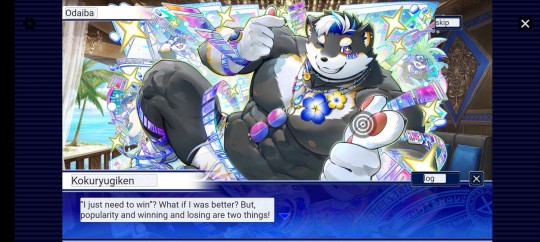
So Hei Long suggested to have a Dance Battle instead with all 3 of them
Of course Sarutahiko felt scared since he's no match to Baronh Dancing
But Hei Long said it's fine just go out there and just dance


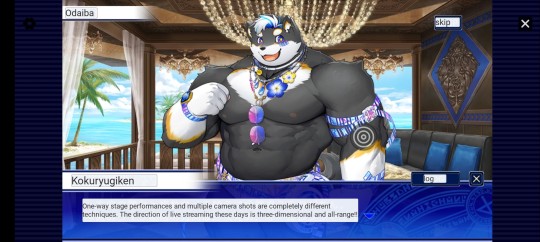
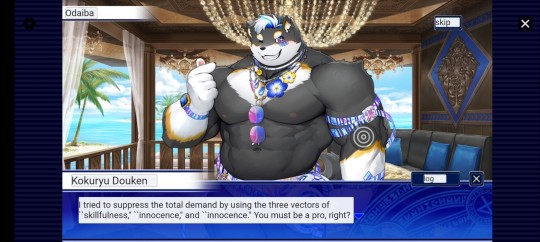


So anyway these 3 Dance Barong and Sarutahiko seems to be doing Normally meanwhile Hei Long Purposely try to messed up but Looking cute which pumped out the crowd
Hei Long said this is his method to grab people attention especially when Streaming
Which made Sarutahiko realise something about the direct in competing
After the dance Hei Long thanked Barong and especially Sarutahiko for the Fun time he left and gave Sarutahiko a huge Tip
Fabulous Summer Host
Ep 4(Part 1)
>>Link to the previous Episode
Wew another 3 part ep
Man hopefully I'll have more time to read more lol
But anyway let's start
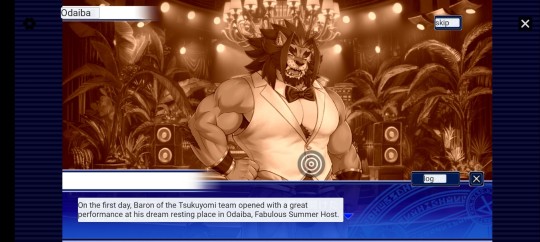
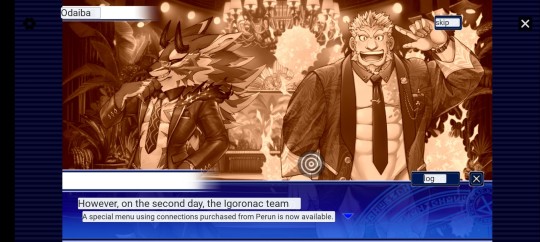




So we start with a little recap of what happened in the past few days in the resort on Day one Barong won with his exceptional Dancing, Day 2 Perun created a special fruit menu that they can serve to their customers
And Bael Demonstrated Excellent customer service making him the Winner for Day 2 which made Y'glonac team on the lead
Till....
Day 3 Happened and it seems Tsukuyomi is putting on his host charm turning tye favor to them(I think he's the winner for Day 3 I'm not sure yet)




So Y'glonac team is now behind and Perun is not happy about it. Since their opponent is Tsukuyomi is pretty obvious they would turn the tides
Y'glonac could use his Authority but he refuses to
25 notes
·
View notes
Text
((Blease... I just want a word that literally means “small”, Baronh dictionary. I don’t need a figurative meaning, I just wanna fix up Zira’s name so it has a meaning vaguely similar to “little star”.))
2 notes
·
View notes
Text
((This is your admiral speaking: Ah, yes, fallen angel names: Ramiel, Rafiel, Lucifer, Duhiel, Ramryun... This Google Translated version of the Baronh dictionary put Lafiel in as “Rafiel” at one point, so I had to.))
#seriously though they sound like fallen angel names#like three of the five names up there are abh names#out of the uniform (ooc)
0 notes
Text
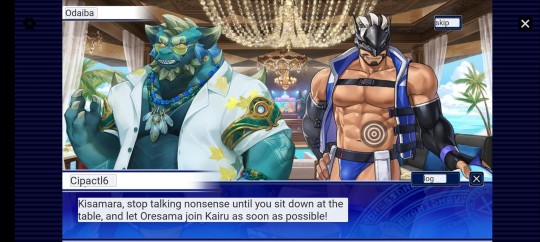
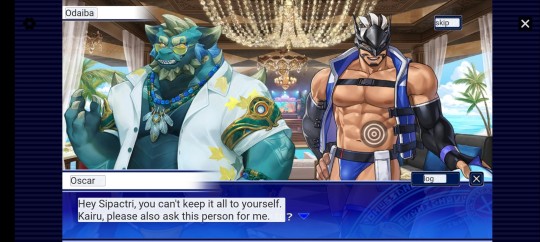


MC is gonna entertain Cipactli and Oscar
Sarutahiko will entertain Gorozaemon and Boogeyman
And Baronh will entertain Amduscias and Christine

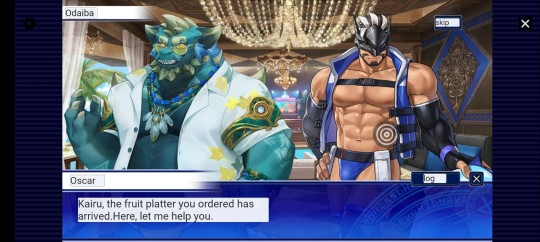


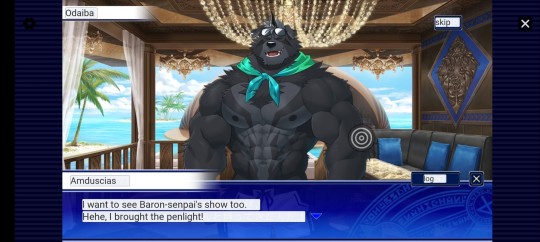
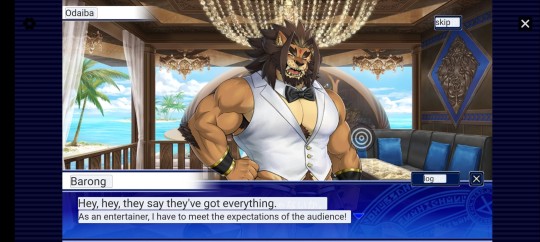
Sarutahiko gave Gorozaemon and Boogeyman a massage
Meanwhile Cipactli and Oscar are fighting over MC
And Christine wonders when will Barong start showing off his true "Show" and Barong happily obliges Christine Request
Fabulous Summer Host
Ep 2 (Before)
>>Link to the previous Episode
Zamn You guys this week's ep Is definitely Spicy and extremely Rizz, I Feel like LW is turning up the heat cause this ep was extremely "Suggetive"
Ok let's begin


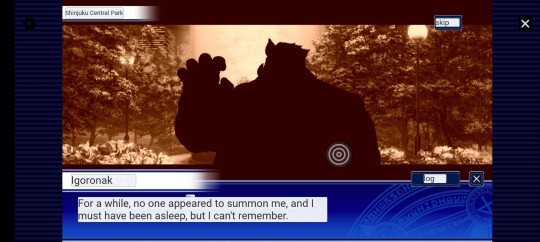
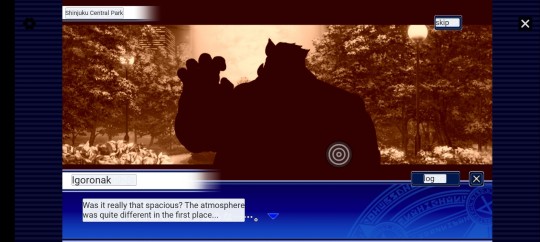


We start with a Backstory on how Y'glonac was summoned to Tokyo and he wanders around Shinjuku till he reaches Kabukicho
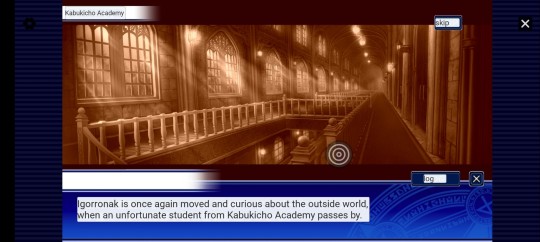
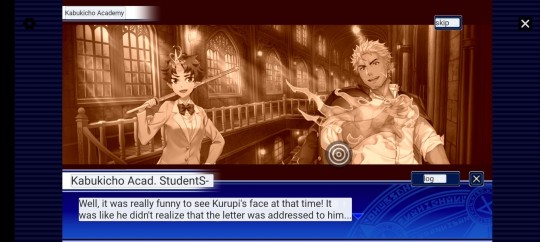
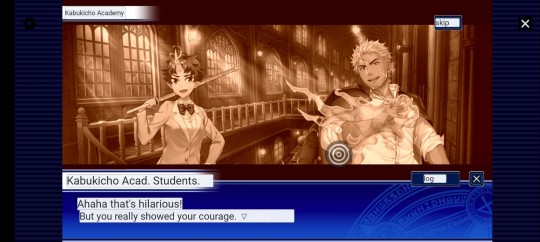

He ended up going to Kabukicho Accademy and wonders its halls till Two students saw him he tried using his Authority but unfortunately can't and ran off
41 notes
·
View notes
Text
((This is your admiral speaking: So... Master Chief, eh? Also, Senior Chief in Baronh is Alm Wesash, and all I can imagine is Alm from Fire Emblem. Except Alm isn’t a senior chief, nope. He’s a KING.))
#to be fair though#alm has green hair so like... yeah#smack on the froch and an alpha and he passes for an abh#out of the uniform (ooc)#deep into the seikai wiki
0 notes
Text
Personnel Files: Reylan
((This is your admiral speaking: YEEEE, probably the only character with a possibly passable name? Haaaa. I know his story’s a bit of a mess ahdjskf))
Name: Reylan Zendai (and something something...I’ll think of a better name) Age: 25 Gender: Male Sexual Orientation: Biiii (which means so far, there’s not a straight face in this crew) Place in society: Engineer...though he’s more than meets the eye~
Overview: Well...this is one wild ride. Reylan’s actually the son of a relatively high ranking officer in the United Mankind, but he ran away to join the Abh. He faked his story being an orphan, barely scraping by with his poor grasp on Baronh. Eventually, he found safety with Zira’s family, becoming her vassal after trying to convince her of his story. Thus far, only Zira and her father knows where he really comes from, but they believe he means well. He has had some prior training in being a mechanic, though.
Appearance: ((Because I’ve got awful art skills, actual pictures will have to wait!)) He’s 5′8″, with shoulder-length auburn hair and green eyes, he’s decently built, like a Greek athlete, almost.
Advantages: Uh...he’s a nice guy? And hilarious to boot with his misunderstandings a lot of the time! And surprisingly skilled with machinery!
Disadvantages: doesn’t know the Abh language, he’s kinda hapless and a little paranoid about his family finding him, he’s pretty much a sitting duck without Zira, even with help from a translator he has on hand
0 notes
